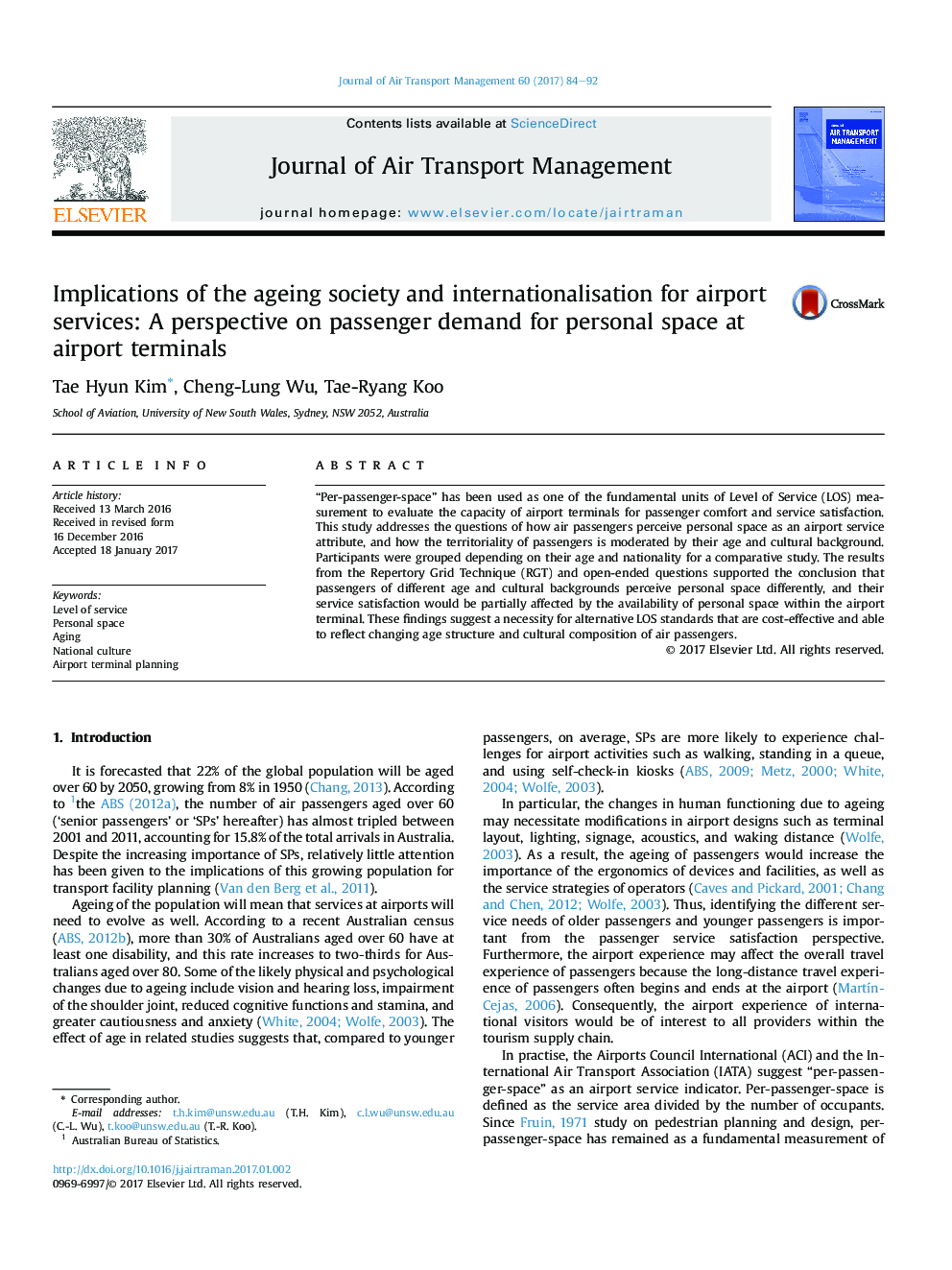| Article ID | Journal | Published Year | Pages | File Type |
|---|---|---|---|---|
| 5111551 | Journal of Air Transport Management | 2017 | 9 Pages |
Abstract
“Per-passenger-space” has been used as one of the fundamental units of Level of Service (LOS) measurement to evaluate the capacity of airport terminals for passenger comfort and service satisfaction. This study addresses the questions of how air passengers perceive personal space as an airport service attribute, and how the territoriality of passengers is moderated by their age and cultural background. Participants were grouped depending on their age and nationality for a comparative study. The results from the Repertory Grid Technique (RGT) and open-ended questions supported the conclusion that passengers of different age and cultural backgrounds perceive personal space differently, and their service satisfaction would be partially affected by the availability of personal space within the airport terminal. These findings suggest a necessity for alternative LOS standards that are cost-effective and able to reflect changing age structure and cultural composition of air passengers.
Related Topics
Social Sciences and Humanities
Business, Management and Accounting
Strategy and Management
Authors
Tae Hyun Kim, Cheng-Lung Wu, Tae-Ryang Koo,
